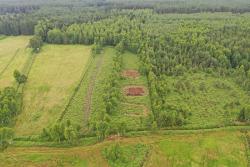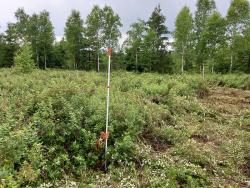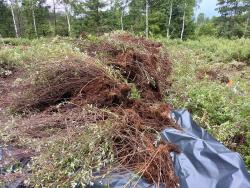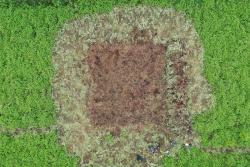 Asset Publisher
Asset Publisher
Polish forests
Poland is in the European lead, while concerning the area of all forests. They cover about 29,2 % of the country territory, and grow within the area of 9,1 million hectares. The overwhelming majority of the forests is state owned, of which almost 7,6 million hectares are managed by the State Forests National Forest Holding..
The number of Polish forest is still growing. The forestation rate of the country has increased from 21 % in 1945 to 29,2 % at the moment. Between 1995 and 2008, the forest area increased by 310 thousand ha. The basis for afforestation works is the "National Programme for Increasing the Forest Cover" (KPZL), assuming an increase of the forestation rate up to 30 % by 2020 and up to 33 % by 2050. Polish forests abound in flora, fauna and fungi. 65 % of the total number of animal species live there.
The forests grow in our country on poor soils, mainly because of the development of the agriculture in previous years. It influences the distribution of the types of the forest sites in Poland. Over 55 % of the forest areas is covered with coniferous forests. In other areas, there are forest sites, mainly the mixed ones. Their small part constitute alder and riparian forests – not more than 3 %.
In the years 1945 – 2011 the area of natural deciduous tree stands within the area of the State Forests National Forest Holding increased from 13 to 28,2 %.
Within the lowlands and uplands the most often occurring tee species is pine. It covers 64,3 % of the forest area of the State Forests National Forest Holding and 57,7 % of private and commune forests. In the mountains the predominant species is European spruce ( in the west) and European spruce with beech (in the east). Domination of pine is the result of carrying on sustainable forest management in the past. Once, the monocultures (crops or cultivations of one species) were the answer to the great demand of industry for wood. Such forests appeared to be quite fragile to climatic factors. They also were often the prey of pests' expansion.
In Polish forests, the share of other tree species, especially deciduous trees have been systematically increasing. The foresters have stepped aside from monocultures – that is why, they try to fit specific species of the forest stand to the natural stand, that would be proper for the given area. Thanks to that, in the years 1945 – 2011, the area of the deciduous tree stands within the lands of the State Forests National Forest Holding increased from 13 to 28,2 %. There occur more and more frequently the following tree species: oaks, ashes, maples, sycamore maples, elms, but also birches, beeches, alders, poplars, hornbeams, aspens, tilias and willows.
Our forests are the most often represented by the forest stands aged 40 to 80 years. The average age of the forest equals 60 years. More and more trees are of big size at the age over 80 years. Since the end of the Second World War, the forests' area has increased up to almost 1,85 million hectares.
Raport o stanie lasów w Polsce 2012
 Asset Publisher
Asset Publisher
PRÓBA ZWALCZENIA INWAZYJNEGO NEOFITU
PRÓBA ZWALCZENIA INWAZYJNEGO NEOFITU
Tawuła kutnerowata (Spiraea tomentosa) – roślina pochodząca z Ameryki Północnej, gdzie występuje na wilgotnych wrzosowiskach i łąkach, głównie na podłożu torfowym stała się poważnym problemem dla leśników gospodarujących na terenach zachodniej Polski.
Pierwsze wzmianki o introdukcji tawuły kutnerowatej w naszym kraju pochodzą z 1806 r. z ogrodu botanicznego w Krakowie. Również dane historyczne potwierdzają, że gatunek ten już w XIX wieku występował na terenie Borów Dolnośląskich.
W rejonie tym gatunek ten wykorzystywany był jako roślina ozdobna oraz do umacniania linii brzegowej stawów rybnych i rowów. Tawuła kutnerowata w szybkim tempie zwiększa liczbę stanowisk oraz zajmowaną powierzchnię przez co zaliczona została do gatunków silnie ekspansywnych.

Łany tawuły kutnerowatej (Fot. J. Karwański)
Na terenie Nadleśnictwa Wymiarki szczególnie na obszarach uwilgotnionych, w miejscu starych stawów rybnych lub dawnych torfowisk tawuła kutnerowata stała się gatunkiem bardzo uciążliwym ale również powszechnym.
W bieżącym roku na terenie Nadleśnictwa Wymiarki w ramach unijnego projektu „Opracowanie metod zwalczania dla minimum 10 inwazyjnych gatunków obcych wraz z przeprowadzeniem działań pilotażowych w terenie”, przystąpiono do testowania sposobów zwalczania tawuły kutnerowatej. Projekt realizowany jest przez Generalną Dyrekcję Ochrony Środowiska i konsorcjum: Uniwersytetu Śląskiego w Katowicach, Instytutu Technologiczno-Przyrodniczego oraz Firmy Eco Future.
W miesiącu czerwcu 2021 r. na wytypowanych powierzchniach próbnych zespół pod kierownictwem dr inż. Blanki Wiatrowskiej z Wydziału Leśnego i Technologii Drewna Uniwersytetu Przyrodniczego w Poznaniu oraz dr hab. Doroty Michalskiej-Hejduk z Uniwersytetu Łódzkiego przeprowadził próbę zwalczenia tawuły kutnerowatej. Na jednej powierzchni wykonano wyrywanie roślin, na kolejnej koszenie tawuły. Powierzchnie zabezpieczono wykoszonym pasem buforowym o szerokości 5 metrów.

Zdjęcia z drona (Fot. T. Mroczkowski)
Działania w zakresie testowania metod zwalczania tawuły kutnerowatej będą kontynuowane i mamy nadzieję, że w efekcie pozwolą na skuteczne ograniczenie presji środowiskowej tego gatunku.
Autor: J.Karwański


 fot. Paweł Fabijański
fot. Paweł Fabijański
 fot. Paweł Fabijański
fot. Paweł Fabijański
 fot. Paweł Fabijański
fot. Paweł Fabijański

 Fot. T. Mroczkowski
Fot. T. Mroczkowski
 Fot. J.Karwański
Fot. J.Karwański
 Fot. J. Karwański
Fot. J. Karwański
 Fot. T. Mroczkowski
Fot. T. Mroczkowski



